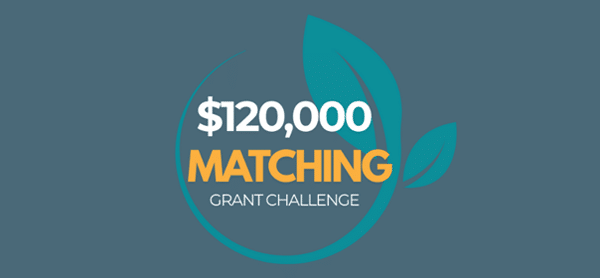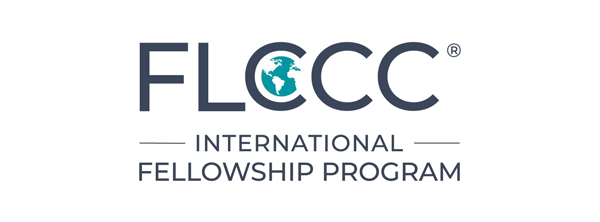Eat Well
Guide To Fasting And Healthy Eating
Many people ask how to remove spike protein from the body. The FLCCC recommends intermittent fasting as one of the most effective ways to induce autophagy, the process by which the body clears out damaged and misfolded cells. We additionally suggest time-restricted feeding as a lasting lifestyle intervention to promote health, reduce disease burden, slow aging, prevent neurodegenerative disease, prevent cardiovascular disease, and prevent cancer.
This document should serve as a quick guide to anyone interested in exploring the beneficial effects of intermittent fasting and time-restricted eating. It is not an exhaustive resource, and we will continue to evolve and develop it over time. Please read this in conjunction with our prevention, treatment, and recovery protocols, which contain further details and recommendations specific to particular health states.
Fasting means abstaining from eating — so technically any time you are not eating a meal, you are fasting.
Time-restricted eating is a type of fasting where food intake is limited to a short window during the day (1 to 8 hours), with only fluids such as water, tea, or coffee for the rest of the day. Intermittent fasting usually involves a longer period of fasting; the most common is alternative day fasting (24-hour fast, followed by a 24-hour eating window). However, many people fast for several days (3-7 days, or up to 14 days) followed by slow refeeding.
Intermittent fasting/time-restricted eating are not synonymous with starvation; people who fast eat nutrient-dense food. Intermittent fasting does not activate starvation metabolic pathways.
For example, when the body is starving, it decreases the basal metabolic rate (BMR) and growth hormone (GH) levels to try to conserve energy and limit growth. Intermittent fasting, on the other hand, increases BMR and GH. This may explain why diets that advocate the traditional approach of ‘eat fewer calories and exercise more’ fail most of the time.
When we eat or drink foods containing carbohydrates, the body breaks these down into glucose (a type of sugar) that then enters the bloodstream. As blood sugar rises, the pancreas makes insulin, a hormone that moves glucose into our cells to use for energy.
Time-restricted eating and carbohydrate restriction/ketogenic diet are good ways to reduce spikes in glucose. Other simple interventions are described by Jessie Inchauspe (aka “the Glucose Goddess”) in her book Glucose Revolution.
- Eat food in the right order to slow gastric emptying and slow the breakdown and absorption of glucose. Begin with greens and fiber, then protein and fat, and then — if you must eat starchy foods, make sure they include fiber and make them the last thing you eat. Eat fruit after a meal and always make sure it is preceded by fiber.
- Drink a tablespoon of vinegar (apple cider vinegar, preferably) stirred into a tall glass of water before eating starch or something sweet. Vinegar decreases the glucose spike as well as the release of insulin. Vinegar may be beneficial even if consumed up to 20 minutes after a starchy food. Note that apple cider vinegar is usually unpasteurized and should be avoided during pregnancy. If vinegar is not readily available, try consuming a few fiber tablets (esp. glucomannan tablets) prior to eating a starchy or sweet treat. This should flatten the curve.
- Go for a 20-minute walk within an hour of eating (especially starchy food). During exercise, muscles take up glucose for energy while increasing mitochondrial oxidative capacity. This is a very effective method to flatten the curve.
- Avoid fruit juices and smoothies, which cause a large glucose spike.
- Despite what your mother told you, it is good to skip breakfast. If you do eat breakfast, avoid sugar, starches, and cereal, which all cause a rapid spike in glucose.
- Avoid snacking throughout the day and avoid distracted eating. Studies have shown that eating on the sofa or at your desk can lead to excess weight gain because we are not as aware of how much we have eaten.
Fasting is simple, it’s free, it’s powerful, and it’s flexible. You can still enjoy life’s little pleasures. And it works with any diet — whether you’re vegan, carnivore, low-carb, or follow a Mediterranean diet.
That said, a low-carbohydrate, high-fat diet is the optimum choice. (Saturated fats and Omega 3-fatty acids are both healthy fats; don’t be fooled!) Just remember to eat real rather than processed foods, avoid seemingly healthy foods that may be high in sugar (such as fruit juice), and keep your meals diverse with lots of leafy greens and cruciferous vegetables (broccoli, cauliflower, cabbage, kale, arugula, bok choy, etc.) Also, don’t eat (or snack) within 3-4 hours of going to bed. This limits autophagy while sleeping, which is vital for brain health and glymphatic flow. Cut out snacking and get between 20 and 30 minutes of exercise (aerobic or resistance training) per day.
Preparing yourself mentally for intermittent fasting or time-restricted eating is half the battle. Don’t calorie count or obsess about eating and food choices. Remember you will not be starving yourself or severely restricting caloric intake.
Time-restricted eating seems to be a particularly effective and practical approach. For timed fasting, begin slowly: start by allowing yourself a 12-hour eating window 5 days a week. This could mean eating between 8:00 in the morning and 8:00 in the evening Monday through Friday. After a week or two, reduce the eating window by an hour or two, and then start doing it 7 days a week. You should aim for no more than an 8-hour eating window every day. This can be further shortened to 4 hours or less in time. The ideal goal is a 1-2 hour eating window, restricted to one meal a day. Timed fasting can be interspersed with day-long, 36-hour, or 48-hour fasts.
Another approach is called “5:2 fasting”, which means you eat normally for 5 days and fast for 2 days by restricting caloric intake to about 500 calories on those days. Alternative day fasting is another popular technique, which entails taking in only liquids for a 24-hour period followed by a 24-hour eating period, repeating this cycle indefinitely. Other people fast Monday, Tuesday, Wednesday, and Friday and eat “normally” the other days.
Whatever approach you do, remember that the goal is to adopt this as a healthy, sustainable lifestyle so think of it as a marathon, not a sprint. Set achievable goals and listen to your body. Avoid pills and potions.
Some people ask what they should do if they are unable to fast. In truth, there are only a few groups of people who should avoid intermittent fasting. These include children under age 18, as it can impair their growth, and people who are malnourished or underweight (BMI < 20). Women who are pregnant or breastfeeding should also not try intermittent fasting. Some premenopausal women seem to be less tolerant of time-restricted eating and should therefore restrict the eating window slowly (see section below). Other approaches to intermittent fasting should probably be avoided in women.
If you have diabetes, gout, or serious underlying medical conditions, you should consult your primary care physician before trying to fast, as changes in your medications and close monitoring may be required.
Otherwise, humans have evolved over millions of years to be well-adapted to fasting. All humans can fast; indeed, it is an integral component of many religious lifestyles. People who have tried and failed are likely severely insulin resistant and may be addicted to carbohydrates and sugar. Ironically, fasting is the best remedy for these people. We suggest a slow and progressive approach to time-restricted feeding; start by skipping breakfast and then slowly increase the time of your fasting window.
Some medications are contraindicated with intermittent fasting. For example, proton pump inhibitors (PPI), which reduce stomach acid, should be avoided as they block autophagy. Suddenly discontinuing a PPI can cause rebound esophagitis, so an H2-blocker like famotidine or ranitidine may be an alternative.
An aloe vera stomach formula or diluted apple cider vinegar have been suggested as alternatives to a PPI; however, there is limited data to support these interventions.
Hydroxychloroquine (HCQ), which is recommended in some COVID-19 protocols, can interfere with the autophagy process, and therefore may limit the benefits of intermittent fasting. Generally, it is fine to continue taking vitamins and supplements while fasting and these do not break your fast.
While autophagy may prevent cancers from occurring in the first place, once cells have begun a malignant transformation, autophagy may promote their growth. Cancer cells have an increased metabolic demand for energy and macromolecular building blocks to proliferate, and they have shown elevated levels of autophagy to recycle nutrients. Therefore, patients with cancer should use caution in activating autophagy (fasting) and should discuss fasting and fasting protocols with their treating oncologist.
Women have different hormone profiles than men, and their hormones are constantly in flux. While men have a hormone profile that is relatively similar from day to day, women’s hormones (at least until after menopause) shift cyclically. The response to fasting differs depending on the day of their cycle.
Days 1-10 of the menstrual cycle are great days for fasting and eating a more keto or lower carbohydrate diet. This is a hormonally resilient time. During days 1-7, there is a subsequent rise in testosterone, which supports body mass. This is a great time for fat-burning and resistance training.
Right after ovulation, which varies around day 14, the body becomes less insulin-sensitive, and it is therefore important to reduce complex carbohydrate intake as insulin sensitivity is at its lowest during this phase. Consider intermittent fasting and following a lower complex carbohydrate diet while increasing fiber, healthy fats, and protein.
The third and fourth weeks of the menstrual cycle are the luteal phase; post-ovulation. Here progesterone levels are highest and metabolism changes yet again. Progesterone is a potent appetite stimulant but slows digestion. This a great time to add green juicing, bone broths, increasing hydration, and increasing fiber to keep bowel movements regular.
Week 4 is the final week of the luteal phase, when the body begins to build hormones to prepare for menstruation. This is a great time to bring in healthy carbohydrates with a wide variety of vegetables and grains to support menstruation.
There are many anecdotal stories of women who have experienced changes to their menstrual cycles after starting intermittent fasting (likely alternate-day or fasting for more than 24 hours). For this reason, pre-menopausal women may need to follow a modified approach, as follows: fasting for 12 hours for two to three days a week and increasing from there. Furthermore, the fasting window should begin at least 4 hours before going to sleep. Fasting days should be nonconsecutive and spaced evenly across the week (for example, Monday, Wednesday, and Friday).
With time, the fasting window can slowly (over weeks) be increased to 16 hours and the number of fasting days per week increased; the increase in the duration and frequency of fasting should be based on the individual woman’s response to fasting.
During perimenopause, hormone levels fluctuate because of fewer ovulations, which means less progesterone is produced in the second half of the menstrual cycle. Periods can be erratic, skipped, or heavy. Symptoms result from the change in the ratio of estrogen to progesterone, and the imbalance creates the symptoms.
During menopause, estrogen is no longer produced by the ovaries and is made in smaller amounts by the adrenal glands and in fat tissue. Estrogen is still produced in the body, but in lower amounts than in younger, menstruating women.
The most significant hormone change of menopause is the lack of progesterone, creating a period of estrogen dominance and low progesterone. Menopause is associated with low estrogen levels, insulin resistance, and features of the “metabolic syndrome”; therefore, intermittent fasting/time restricted eating combined with a ketogenic diet may increase estrogen levels and “rebalance” hormonal levels.
In addition, berberine (600 mg once or twice a day) is suggested, as this natural herb increases insulin sensitivity, improves the lipid profile, and has beneficial effects on the microbiome. Taking melatonin (0.75-5 mg at night; extended-release tablets) is another promising strategy to manage postmenopausal patients via restoring the osteoporosis-impaired osteogenic potential of bone marrow mesenchymal stem cells.
This document is primarily intended to assist healthcare professionals in providing appropriate medical care for patients who have received a COVID-19 vaccine. Patients should always consult a trusted healthcare provider before embarking on any new treatment.
Never disregard professional medical advice because of something you have read on our website and releases. This is not intended to be a substitute for professional medical advice, diagnosis, or treatment regarding any patient. Treatment for an individual patient is determined by many factors and thus should rely on the judgment of your pediatrician or qualified healthcare provider. Always seek their advice with any questions you may have regarding your medical condition or health.
Please note our full disclaimer at: www.flccc.net/disclaimer




